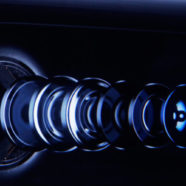
The iPhone is renowned for taking great photos. Even by that measure, the iPhone 7 Plus contains some new technology that promises to push phone photography to a level few have experienced. And not just on Apple’s devices, but on smartphones in general.
From a photo standpoint, the unique feature on the iPhone 7 Plus is its dual-camera setup. This has been done before by other phone-makers with varying results. But this is the first time it’s being done in an iPhone, which gives it a new kind of legitimacy and pace-car status in the industry. Other companies, who typically strategize from a place of making a better camera than the one on the iPhone, must now do something similar to Apple’s new camera just to keep up.
Dual Lenses
The iPhone 7 Plus features both an f/1.8, 28mm wide-angle lens and a 56mm telephoto lens on the back. Apple follows HTC, LG, and Huawei down the dual-shooter path. Of course, slapping an additional lens and sensor on a phone doesn’t automatically make it a better camera. In DxOMark Mobile’s rankings of the best smartphone cameras, some dual-camera shooters such as the LG G5 are near the top of the charts. Others are less successful, such as the Leica-branded Huawei P9, which trails single-camera shooters that are more than a year old.
A lens is only as good as the sensor and processing pipeline behind it. The iPhone 7 sports a 12-megapixel sensor behind its 28mm wide-angle lens, while the iPhone 7 Plus packs another 12-megapixel sensor behind that portrait-friendly telephoto lens. These modules are optically stabilized, which minimizes the blurriness of photos shot with shaky hands.
Look Sharp
The killer app on the 7 Plus is a 2x optical zoom. Tap an onscreen button to jump from the wide angle to the telephoto lens. Yes, all smartphone cameras let you zoom, but most of them use a digital zoom. That means the lens doesn’t move, the camera merely enlarges the pixels in each photo for a bigger view. Such images degrade as you increase the zoom. The new iPhone has digital zoom too, but because you’re starting with 56mm telephoto glass, you’ll see less degradation in resolution as you start moving in with the 10x digital zoom. Apple also touts the expanded dynamic range and color capabilities of the new shooter, and a RAW mode saves images in DNG format—a feature common to higher-end cameras, but absent from most phones.
Processing Power
Apple points to its image signal processor as the secret weapon in its new phone. In both the single-shooter iPhone 7 and the dual-lens iPhone 7 Plus, Apple claims this processor uses machine learning to scan a scene for faces and other recognizable objects, then pays particular attention to them when focusing and setting exposure. It also optimizes everything from the white balance to noise reduction to tone mapping. That’s not radically different from the processor in any other phone, just faster—Schiller says Apple designed the chip for speed.
“It’s so smart, it is performing 100 billion operations in 25 milliseconds,” explained Schiller onstage. “This truly is a supercomputer for photos.”
Hyperbole aside, that image signal processor is the key to snapping DSLR-like images. Apple claims the chip can create a depth map of a scene using data from the two sensors, apply sharp focus to the foreground, and blur the background with pleasant bokeh. These are things you typically achieve only in a camera with a larger sensor and a good lens.
Those shallow depth-of-field effects with pleasantly blurred backgrounds are among the primary benefits of pro cameras, so the fact that Apple appears to have replicated it with the iPhone 7 Plus is significant. (The demo photos shown during the event looked impressive, and our initial hands-on impressions were promising.) Furthermore, in the new portrait mode, the camera activates the 56mm telephoto module, and the focal length and processing tricks give these images a more film-like appearance.
One More Thing
As enticing as these features are, it seems some of them aren’t quite ready for consumers. Apple billed part of its demo as a “sneak peek” and hinted during its event that iPhone 7 Plus buyers won’t get the camera’s full skillset when the phone arrives September 16. Schiller says some of the dual-lens-optimized features like the depth-of-field effects will be available as a “free software update” in the months after the phone’s launch.
Still, even with the delay, the iPhone 7 Plus should continue Apple’s reputation for building what has become the world’s most popular camera. And it will also continue to drive the rest of the smartphone industry forward.
